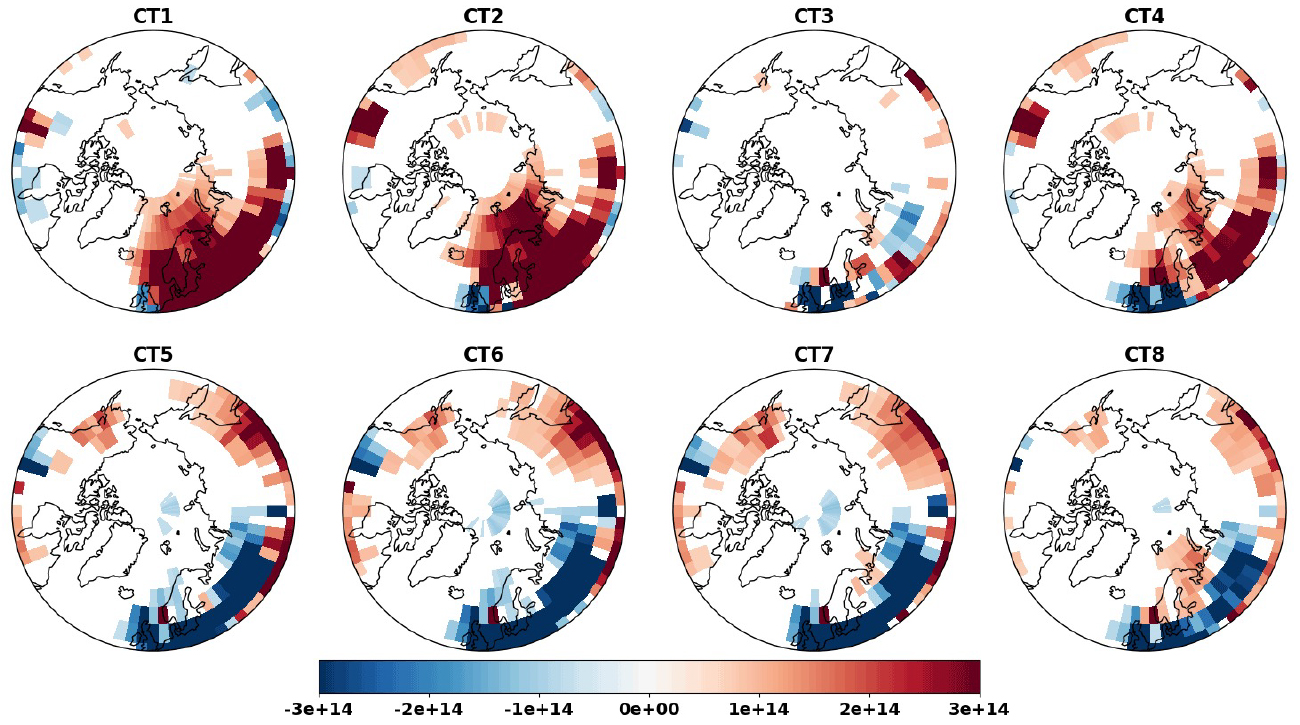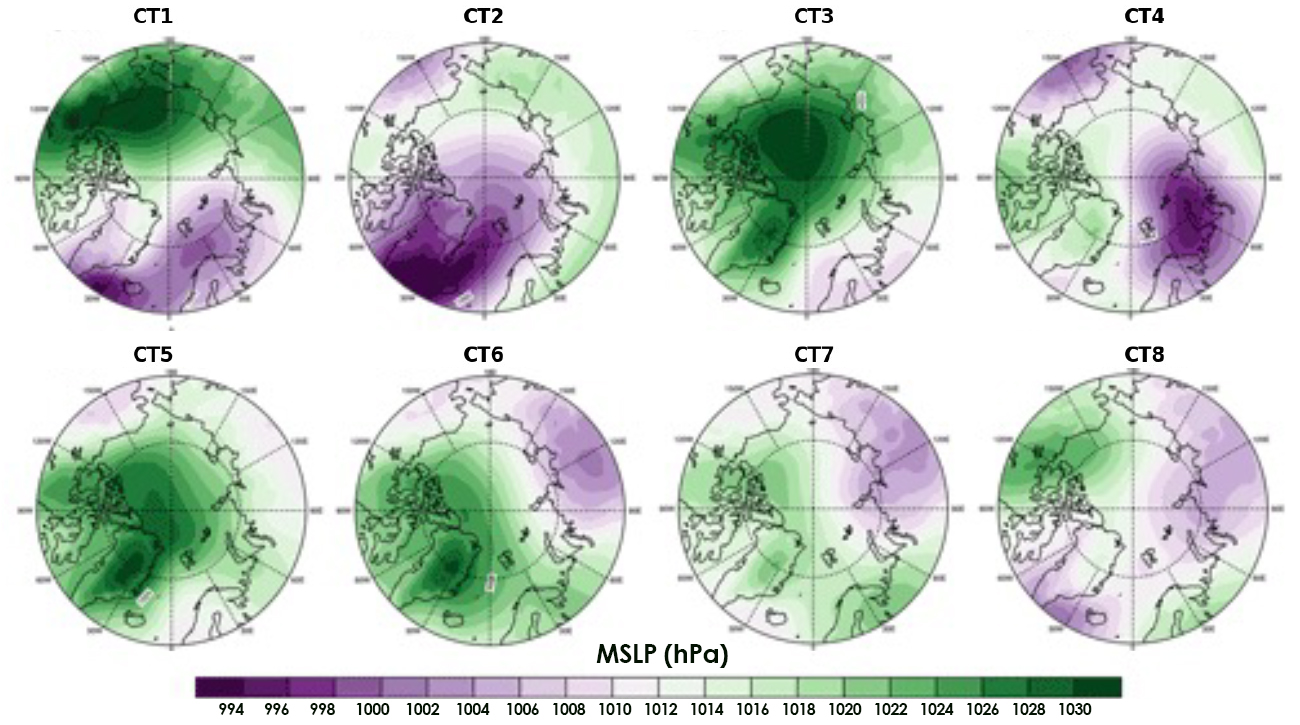
Technical Description of Figure(s):
Figure 1): Aura OMI nitrogen dioxide NO2 total column anomalies for the eight circulation types. Only those anomalies that are statistically significant at the 90% confidence level are shown.

Figure 2: Mean sea level pressure (MSLP) averaged over the cases belonging to each of eight circulation types considered in this study.
Scientific significance, societal relevance, and relationships to future missions:
The transport and distribution of short-lived climate forcers in the Arctic are influenced by the prevailing atmospheric circulation patterns. Understanding the coupling between pollutant distribution and dominant atmospheric circulation types is therefore important, not least to understand the processes governing the local processing of pollutants in the Arctic, but also to test the fidelity of chemistry transport models to simulate the transport from the southerly latitudes. Here, we use a combination of satellite-based and reanalysis datasets spanning over 12 years (2007–2018) and investigate the concentrations of NO2, O3, CO and aerosols and their co-variability during eight different atmospheric circulation types in the spring season (March, April and May) over the Arctic. We carried out a self-organizing map analysis of mean sea level pressure to derive these circulation types. Although almost all pollutants investigated here show statistically significant sensitivity to the circulation types, NO2 exhibits the strongest sensitivity among them. The study provides the most comprehensive assessment so far of the sensitivity of springtime pollutant distribution to the atmospheric circulation types in the Arctic and also provides an observational basis for the evaluation of chemistry transport models.
Data Availability:
The daily total column NO2 retrievals (L2) can be accessed at (Krotkov et al., 2019).
The AIRS satellite version 7 dataset is used for the 500 hPa daily CO in this study and can be accessed at the following link: (NASA Jet Repulsion Laboratory, 2021a). The data were processed at the Jet Propulsion Laboratory, California Institute of Technology. The details are published at (NASA Jet Propulsion Laboratory, 2021b). The near-surface ozone data from the CAMS (Copernicus Atmosphere Monitoring Service) database can be accessed via the following link: (Copernicus Atmosphere Monitoring Service, 2021) and are provided by the European Union’s Earth Observation Programme, Copernicus.
The CALIPSO Level 2 standard aerosol profile product version 4.2 available at 5 km horizontal resolution is used (CAL_LID_L2_05kmAPro-Standard-V4-20) for the aerosol optical depths in this study. The data are accessible via (NASA Earth Data, 2020), created by NASA Langley Atmospheric Science Data Center DAAC. The mean sea level pressure (MSLP) data are from the ERA5 reanalysis (Hersbach et al., 2020) and are available at the Climate Data Store (CDS) via the link (Copernicus Climate Change Service, 2017).
References:
Thomas, M. A., Devasthale, A., and Nygård, T.: Influence of springtime atmospheric circulation types on the distribution of air pollutants in the Arctic, Atmos. Chem. Phys., 21, 16593–16608, https://doi.org/10.5194/acp-21-16593-2021, 2021.
12.2021